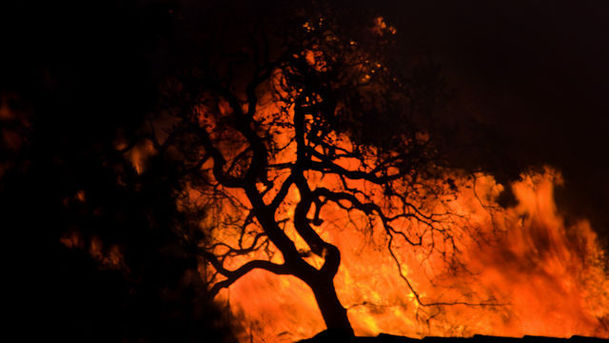Sunday Feature - Goethe's Oak

August 1944, a tree burns in Buchenwald concentration camp. Goethe's Oak is on fire, hit by a stray incendiary bomb. To some of the prisoners in this wretched place its final moments were prophetic. Surely the days of the Nazi Reich must be numbered now. Christopher Cook pieces together the complex story of a symbol and a place. Goethe's Oak, 'the Fat Oak', with its wizened and gnarled trunk became a powerful symbol for those imprisoned in the camp at Buchenwald. Supposedly, this was the very tree where Goethe had once sat with his lover and contemplated the beauty of the woods and the world around him, where he wrote poetry too. The woods at Ettersberg that surround the oak are just a short walk from the town of Weimar where Goethe had made his home and his reputation as one of the great thinkers of the age. Presiding over a new classical age in Germany, a country still in its infancy, Goethe helped to define a new German identity. The National Socialists also loved Weimar. The Hitler Youth were founded nearby; Hitler stayed there frequently and spoke at public rallies. Then in 1937, the S.S. decided to carve out a concentration camp in the woods up on the Ettersberg. First it was named for the Ettersberg itself. But the community in Weimar, many of them National Socialists, were uneasy about the name with its close associations with the life and achievements of Goethe. So the beech woods themselves gave the camp its new name of Buchenwald. 'Goethe's Oak' became the sole tree standing in the camp. For those able to steal a few free moments from their punishing 14-16 hours work detail it offered precious shade. And this single oak tree became a potent symbol for the prisoners of the other Germany, the Germany of Goethe, Schiller and the poet Wieland. A place of dignity where men might be free. But the oak was already dying, its roots were starved of water. By August 1944 the oak's branches were bare and bleached. An Allied bombing raid of the surrounding armaments factory accidentally reduced 'Goethe's Oak' to a charred stump. Its destruction was for some a certain omen that the Reich would soon fall. In secret a fragment of the charred wood was smuggled away and carved into a sculpture. Black, smoky oak rendered into a death mask to symbolize the 51,000 prisoners who had died in Buchenwald. And Bruno Apitz, the man who fashioned this sculpture, the so-called 'Last Face', would in time create one of the most powerful stories about Buchenwald around the heroic Communist uprising in the camp's last days. The so-called uprising in the final days of the camp and the actions of the Communist underground within Buchenwald, both heavily mythologized, became central to the identity of the newly Communist East Germany. Now, twenty years after the end of East Germany and sixty-five years after the American army liberated Buchenwald, the many meanings of both tree and camp continue to occupy survivors, historians and perhaps Germany itself. Christopher Cook walks from Weimar and through the gates of Buchenwald to a place where history collides with myth. Producer: Mark Burman.